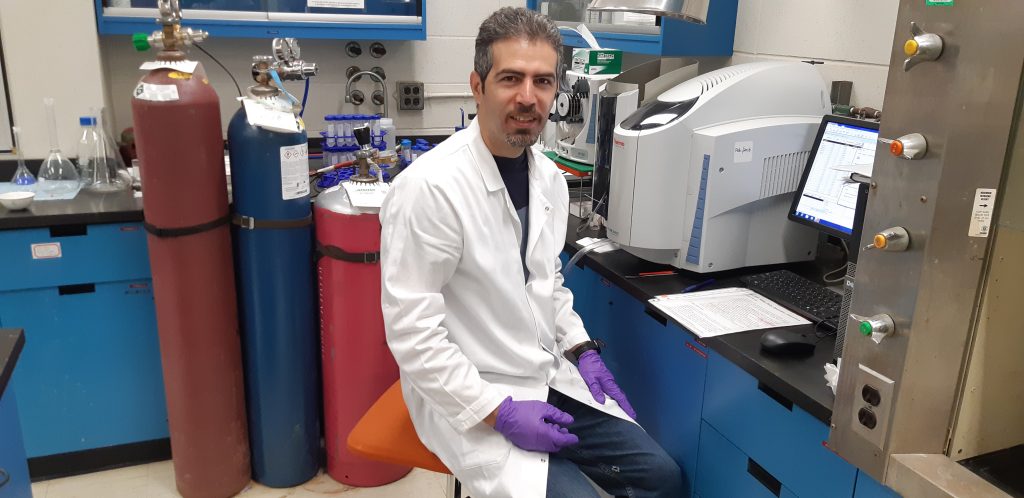
News
Research
Water Quality
USask researchers using agricultural waste to remove arsenic from drinking water
October 27, 2021 By Ground Water Canada
 Khaled Zoroufchi Benis, of the University of Saskatchewan's College of Engineering, is using the Canadian Light Source to help develop agricultural waste into a filter that can remove arsenic from drinking water. Photo courtesy Canadian Light Source
Khaled Zoroufchi Benis, of the University of Saskatchewan's College of Engineering, is using the Canadian Light Source to help develop agricultural waste into a filter that can remove arsenic from drinking water. Photo courtesy Canadian Light Source Saskatoon – Researchers at the University of Saskatchewan are developing an affordable method to remove arsenic from water. They are turning agricultural waste, such as wheat and canola straw, into a filter that adsorbs the toxin.
More than 200 million people in more than 70 countries, including some in Canada, are drinking water with a high concentration of arsenic, the university said in a news release. This international risk to human health can cause cancer, nausea and blood vessel damage.
Khaled Zoroufchi Benis, a Vanier Scholar and PhD candidate with the College of Engineering at the University of Saskatchewan. His team, which includes Benis’ supervisors, Prof. Jafar Soltan and Prof. Kerry McPhedranis, is using the Canadian Light Source at USask to make their water purifying process more efficient. The BXDS, HXMA, and BioXAS-Spectroscopy beamlines utilize synchrotron light millions of times brighter than the sun to reveal detailed information about their filter.
The team’s invention could help put agricultural residues to good use. Currently, Canada annually produces about 47 million tonnes of these residues.
The Canadian Light Source at the University of Saskatchewan is a national research facility, producing the brightest light in Canada — millions of times brighter than even the sun. The CLS hosts annually more than 1,000 scientists from around the world who use our light to conduct health, agricultural, environmental and advanced materials research. The Canada Foundation for Innovation, Natural Sciences and Engineering Research Council, National Research Council of Canada, Canadian Institutes of Health Research, the Government of Saskatchewan and the University of Saskatchewan fund CLS operations.
Print this page